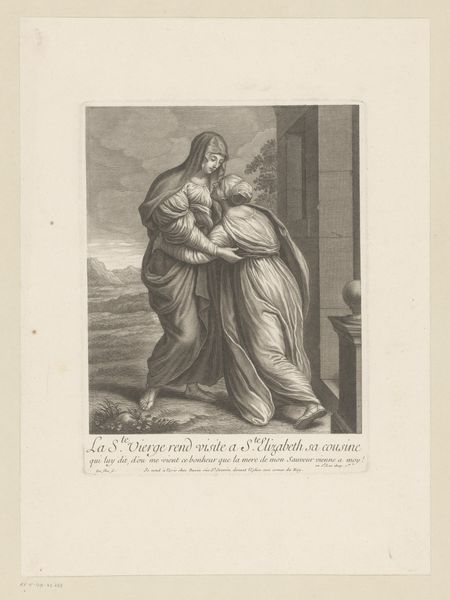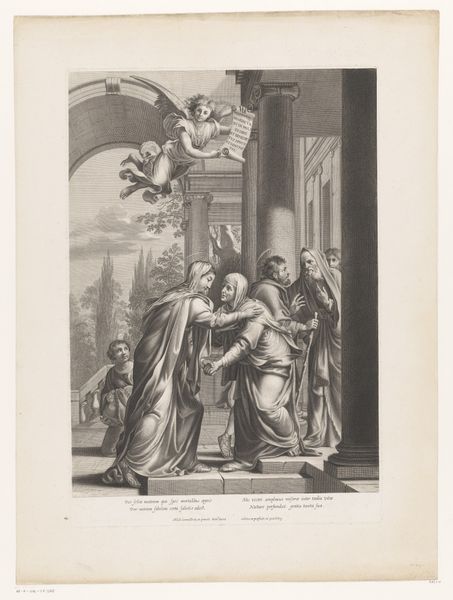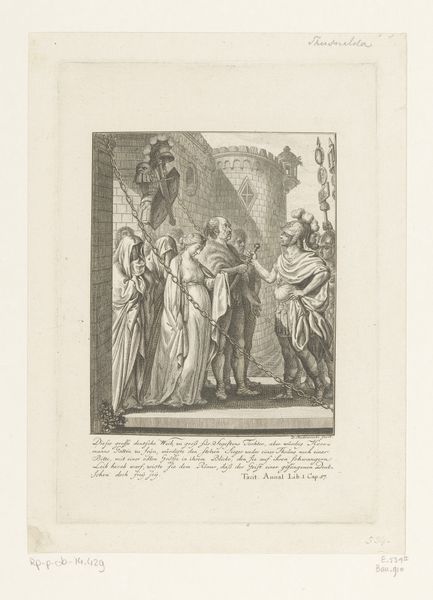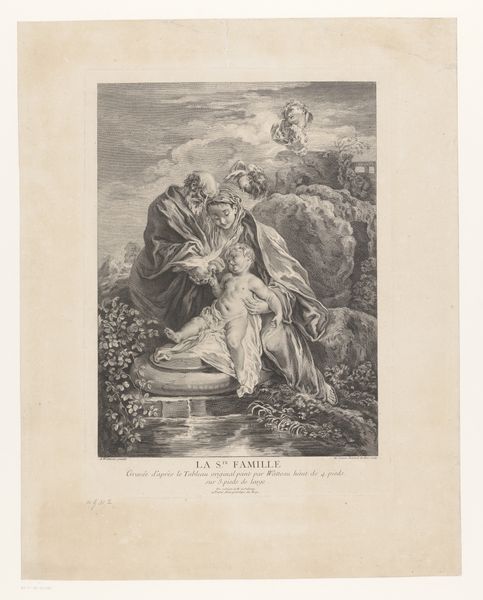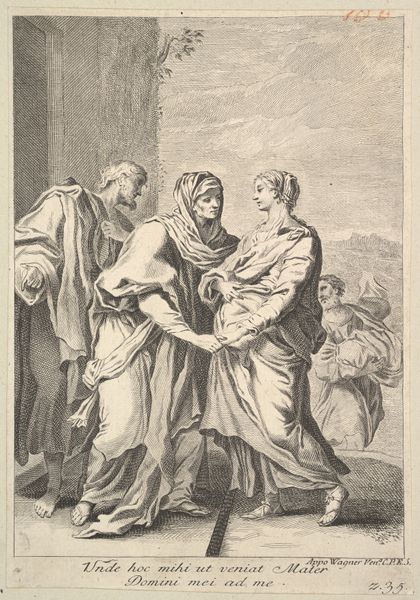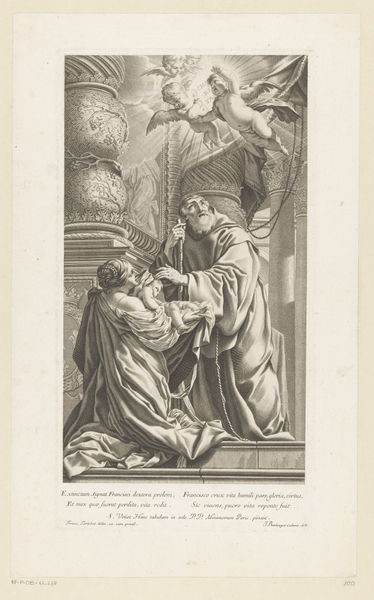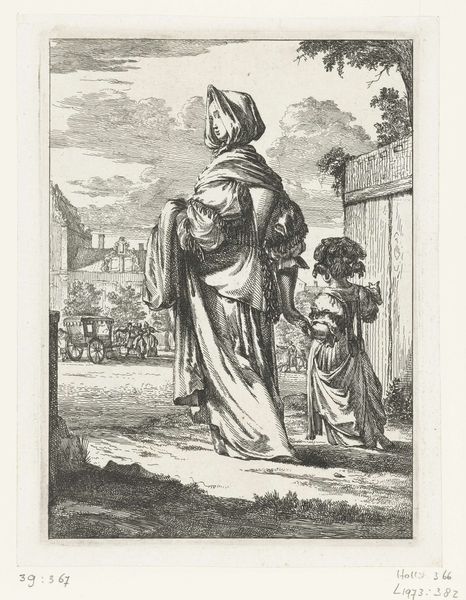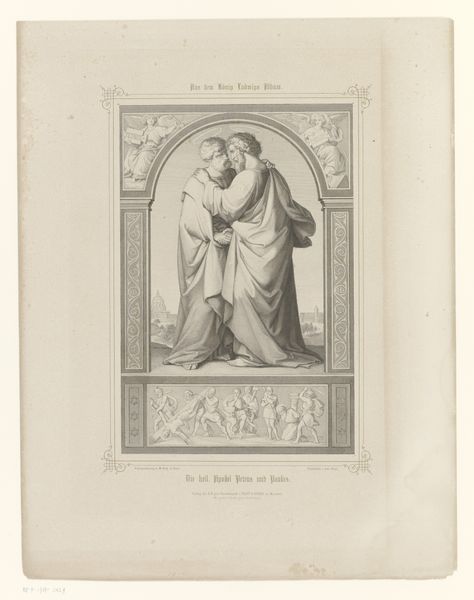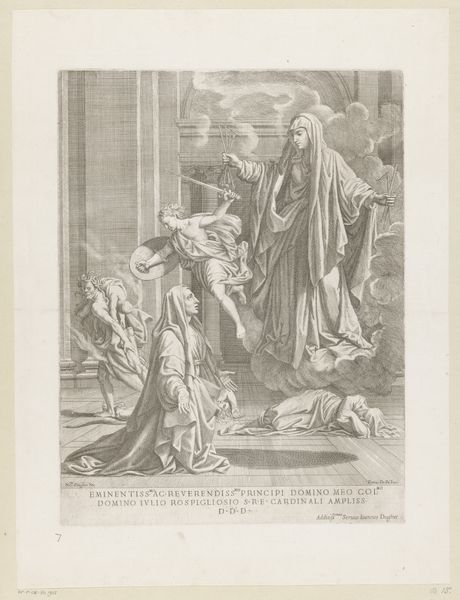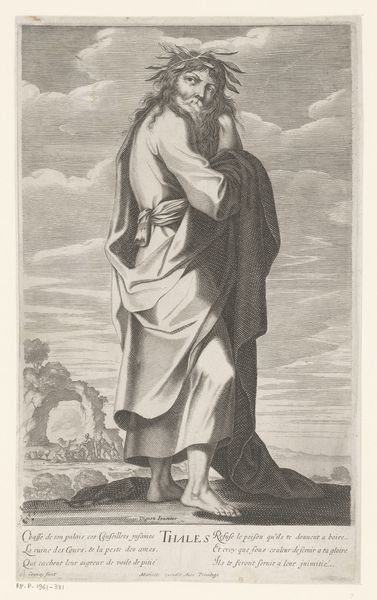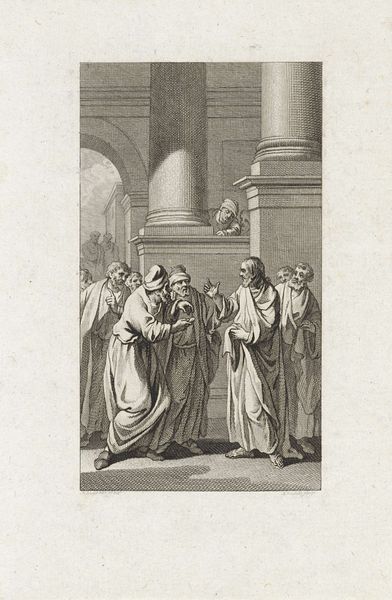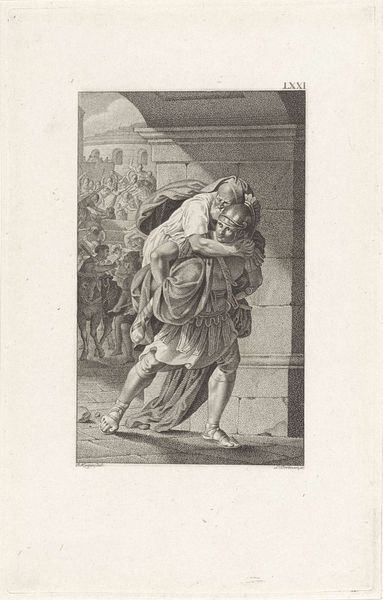
print, engraving
#
baroque
# print
#
old engraving style
#
figuration
#
history-painting
#
engraving
Dimensions: height 367 mm, width 263 mm
Copyright: Rijks Museum: Open Domain
Curator: There's a certain quiet solemnity to this print. It feels almost reverent, doesn't it? Editor: It does. Let's delve in. This is "Visitatie," an engraving made sometime between 1600 and 1667, and currently held at the Rijksmuseum. The artist is Michel Lasne. Curator: Looking at the material aspect first, the fine lines achieved through engraving are striking. Consider the level of skill needed to render those draperies, the landscape receding into the distance. We often separate printmaking from the "fine arts," but works like this challenge such divisions, revealing sophisticated labor practices and a detailed understanding of materiality. Editor: Absolutely. And the context here is critical: this depicts the Visitation, Mary's visit to her cousin Elizabeth. We see the moment of recognition between two women, both pregnant under miraculous circumstances—Mary with Jesus, and Elizabeth with John the Baptist. Look at how Lasne renders their embrace, filled with understanding and a shared secret, defying patriarchal constraints and celebrating female bonds. Curator: Precisely. One wonders about the networks that sustained Lasne. Was he working independently? As part of a larger workshop? What was the cost of materials like copper plates, inks, and paper during that period, and who purchased these prints? Considering art as part of the economic system reveals much about its circulation and audience. Editor: Thinking about audience is key. Religious imagery served many purposes. It instructed, inspired devotion, and legitimized power structures. How did the Reformation affect depictions of sacred encounters such as this? What dialogues or even conflicts are embedded within this seemingly peaceful scene? It begs questioning notions about gender roles and power within religious narratives. Curator: Furthermore, I notice the use of varying line weights to suggest depth. Think of the technical mastery required. Editor: Yes, but remember those decisions also serve to emphasize certain elements: Mary's prominent placement, Elizabeth's slightly submissive posture. We need to read the social language embedded within those material choices. Curator: Indeed. Thinking about Lasne's production illuminates so much more. Thank you for shedding light on those narratives. Editor: Thank you; I'm now even more conscious of those rich layers of historical and artistic meaning in the work.
Comments
No comments
Be the first to comment and join the conversation on the ultimate creative platform.
